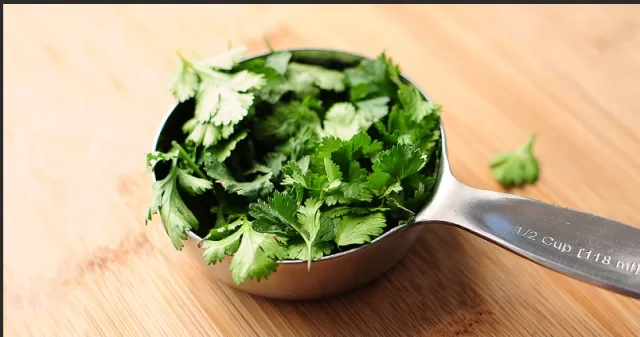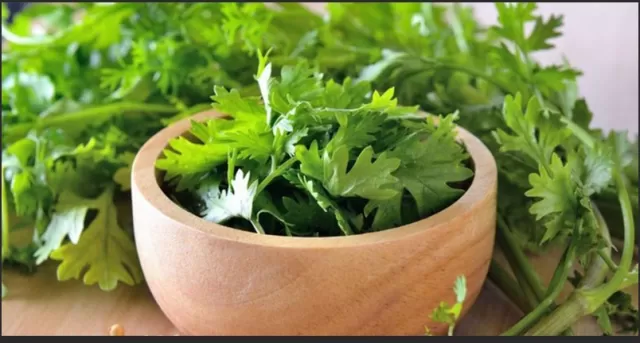The Science Behind Why Some Perceive Cilantro as Soapy. Cilantro, a versatile and aromatic herb, plays a crucial role in a myriad of recipes, elevating the flavors of guacamole, salsas, chicken, shrimp dishes, and various culinary traditions. However, despite its widespread popularity, cilantro is not universally loved. In fact, its divisive nature often elicits stronger reactions from those who dislike it compared to individuals with aversions to milder herbs like basil or parsley.
The polarizing sentiment toward cilantro has sparked a considerable debate, with some people expressing an intense distaste for its flavor. If you find yourself among those who harbor a strong aversion to cilantro, you’re not alone. The reasons behind this phenomenon are complex and often linked to individual taste perceptions influenced by genetic factors. As a result, cilantro’s distinctive taste, described by some as fresh and citrusy, may be perceived as soapy and bitter by those with a genetic predisposition.
Whether you’re a cilantro enthusiast or part of the group that finds its flavor less appealing, the ongoing discussion around cilantro highlights the intriguing and subjective nature of taste preferences in the culinary world.
The Cilantro Conundrum: Genetic Predispositions and Flavor Perception

The polarizing nature of cilantro, with some adoring its fresh herbaceousness and others finding it soapy and bitter, can be attributed to genetic predispositions.
According to Bryan Quoc Le, Ph. D.
, a food scientist, cilantro produces aldehydes, specifically long-chain alkenals and alkanals, when chopped or crushed. These compounds share structural similarities with those generated in soap production.
Individuals with a heightened sensitivity to these aldehydes, due to genetic factors, perceive cilantro as having a soapy and bitter taste.
Chef Brooke Baevsky, a manager in product development at Freshly, notes that this genetic variation is more prevalent among individuals of East Asian, Caucasian, and African descent.
Estimates suggest that 4 to 14 percent of the U. S.
population possesses this genetic predisposition, resulting in cilantro tasting like soap for these individuals. In contrast, those without this genetic variation experience cilantro as a refreshing and flavorful herb.
Understanding the interplay between genetics and flavor perception sheds light on why cilantro can be a divisive herb, celebrated by some and reviled by others.
It’s a reminder that our taste preferences are influenced not only by culinary experiences but also by the complex interactions of our genetic makeup.
Substituting Cilantro in Recipes: Culinary Solutions for Aversion
If you find yourself facing the challenge of cooking for individuals who dislike cilantro, fear not – there are several alternative herbs that can seamlessly replace cilantro in recipes.
Consider the following substitutions based on flavor profiles:.
Flat-leaf Parsley: Parsley is a mild and fresh herb that can substitute for cilantro in many dishes.
It lacks the soapy taste that cilantro aversions may find off-putting.
Basil: Sweet basil or Thai basil can bring a distinct flavor to your dish, offering a slightly peppery and aromatic twist.
Chervil: Chervil is a delicate herb with a subtle anise flavor.
It can be an excellent replacement for cilantro in certain recipes.
Dill: For a slightly tangy and aromatic flavor, dill can work well in dishes that call for cilantro.
Mint: In certain dishes, especially those with a hint of sweetness, mint can provide a refreshing alternative to cilantro.
Experimenting with these substitutions allows you to cater to various tastes without compromising the overall flavor of your dishes.
Tailor your choices based on the specific flavor profiles of your recipes and the preferences of those you’re cooking for.
Cilantro Alternatives: Brightening Flavors with Parsley and Citrus

For those seeking alternatives to cilantro, Jessica Randhawa, recipe developer and writer of The Forked Spoon, suggests a combination of parsley with either lemon juice or lemon zest.
This substitution aims to replicate cilantro’s citrusy tones, as parsley alone lacks this distinctive flavor profile.
Shawn Matijevich, lead chef for online culinary arts and food operations at the Institute of Culinary Education, acknowledges that there isn’t a direct substitute for cilantro.
However, he recommends a similar swap: Chop parsley and lemon zest together, then sprinkle lemon or lime juice over the mixture. This approach infuses the dish with the citrus and herbaceous qualities reminiscent of cilantro.
These cilantro alternatives allow individuals who may dislike cilantro to still enjoy vibrant and flavorful dishes, as the combination of parsley and citrus works to brighten and elevate the overall taste experience.
Guacamole and Salsa Sans Cilantro: Embracing Substitutes for Bold Flavors
When crafting guacamole or salsa recipes that originally call for cilantro, it’s essential to substitute an alternative herb to maintain the dish’s bold and bright flavor notes.
Chef Brooke Baevsky suggests using parsley as a cilantro substitute in guacamole, especially if the recipe already incorporates lime juice. The same principle applies to pico de gallo recipes. Additionally, soft herbs like basil and/or parsley can be effective alternatives, especially when the citrusy element is already present in the recipe.
The key takeaway is not to simply omit cilantro without replacing it with another herb.
By selecting a suitable substitute, you ensure that your guacamole or salsa retains its vibrancy and complexity, even for those who may not be cilantro enthusiasts. Embrace the versatility of herbs and experiment with combinations to discover the perfect flavor balance for your palate.
Pleasing Every Palate: Adapting Recipes for Cilantro-Averse Guests

When catering to guests who dislike cilantro, incorporating simple recipe tweaks can ensure you still delight their palates without compromising on flavor.
The key is to substitute cilantro with alternatives such as parsley, which brings its own fresh and vibrant notes to the dish. By making thoughtful adjustments to recipes that traditionally rely on cilantro, you open up the possibility of pleasing a broader range of tastes and preferences.
Whether it’s a spicy cilantro salad or another cilantro-centric dish, the addition of parsley and other complementary herbs ensures that everyone at the table can enjoy the delicious and nuanced flavors you’ve prepared.
*The information is for reference only.